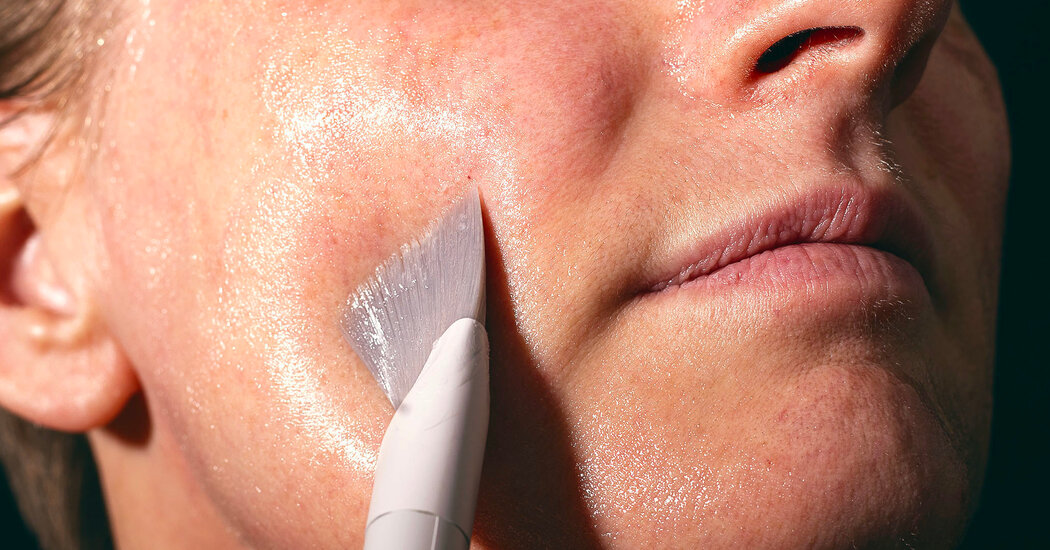The F.D.A. recommends against using the skin care products without professional supervision. Experts explain the risks.
When Laura Messina, 43, wanted to lighten the dark spots under her eyes this summer, she tried a chemical peel she bought online from a department store.
Hours later, her face was covered in rough, red, burning splotches. The irritation lingered for days, so she rushed to a dermatologist who prescribed a cream that she applied twice a day for two weeks.
“It was silly of me to even try it,” she said. “This was a lesson for me.”
Chemical peels, procedures where liquid is applied to skin to remove outer layers, are typically administered by dermatologists and other licensed professionals. There’s evidence that peels help manage pimples, discoloration, scarring and signs of aging.
While at-home versions are widely available, they can come with some risks, experts say. In July, the Food and Drug Administration warned consumers against buying chemical peels with high concentrations of certain acids and urged consumers to use peels only under professional supervision.
For those who want to try peels themselves, dermatologists said it’s crucial to be safe.
What are at-home chemical peels?
Over-the-counter chemical peels are similar to those used in dermatologists’ offices — they both may contain a variety of acids. At-home versions usually include alpha-hydroxy acids like glycolic or lactic acid, or beta-hydroxy acids such as salicylic acid. Both types improve skin texture and appearance by penetrating and removing the outer layer of skin.
The solutions in at-home versions, however, are generally weaker than those used in doctor’s offices, so their results are often more subtle.
